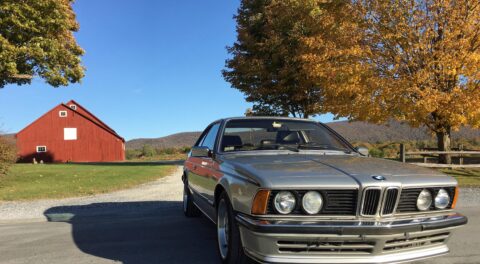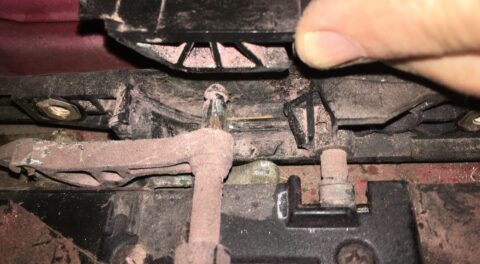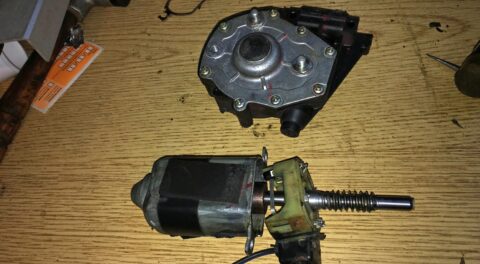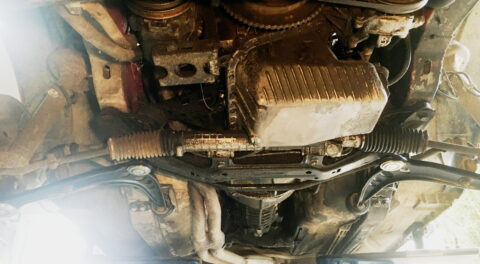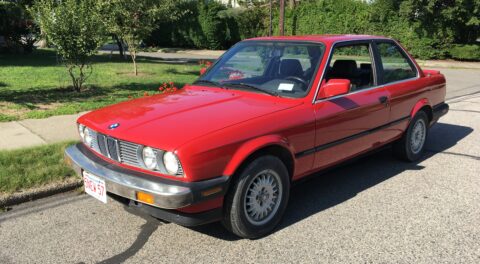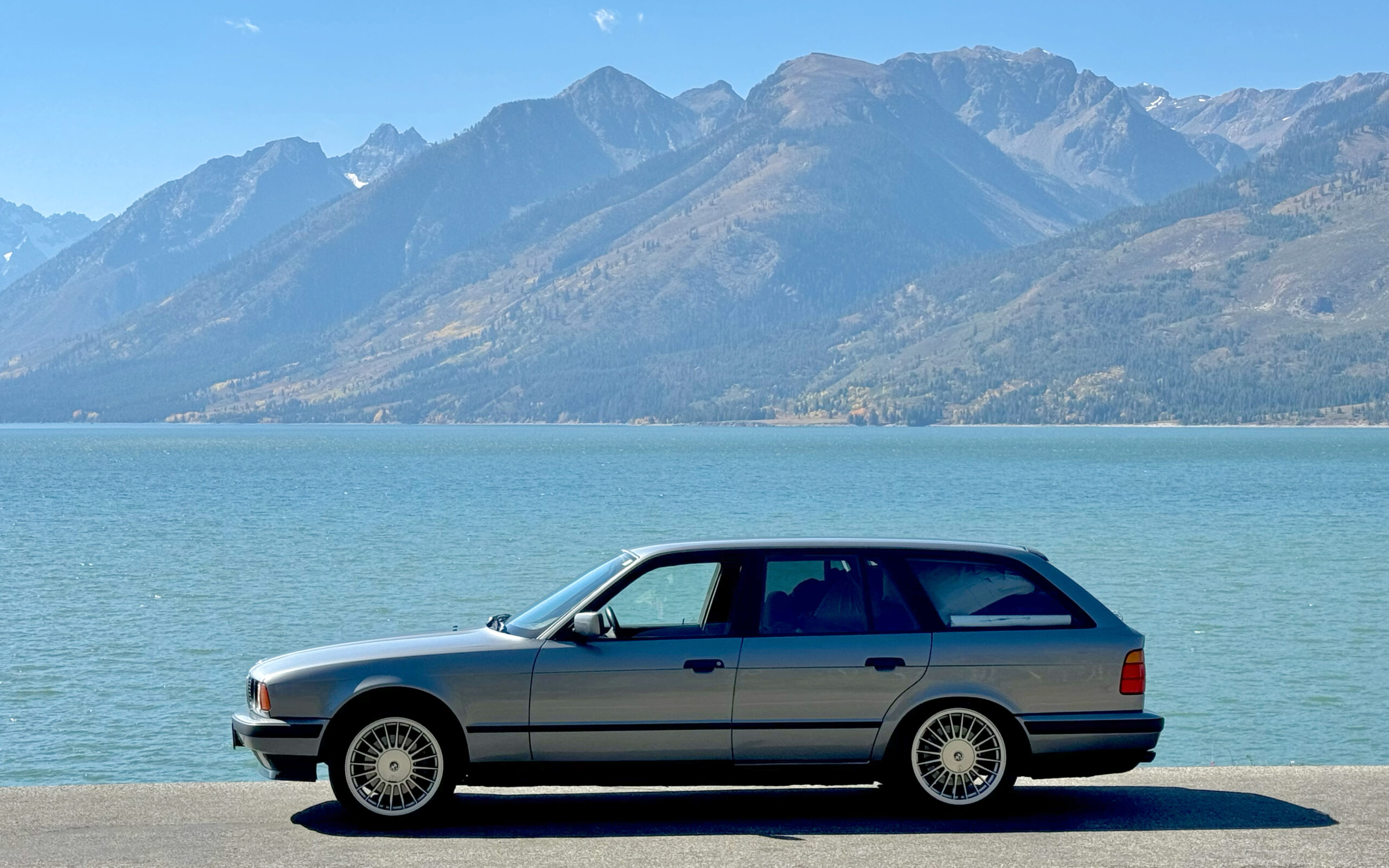Last week I discussed how, in order to continue drive Bertha, I needed to make her completely legal, which meant getting her past a stringent Massachusetts state inspection. This required replacing her blatantly cracked windshield. I procured a used windshield and a new OEM gasket, removed the old windshield, and sanded and patched the rust that was beneath it. Next was the actual installation of the new windshield and gasket. I knew that it was going to be awful, because I’d done it last year with Louie, but once more unto the breach, right?
You may be aware that on YouTube there’s a three-part video of our own Mike Self and a few other folks replacing a 2002 windshield at Vintage At The Vineyard in Winston-Salem in 2008. In the video, Mike does “the rope trick,” in which you put the gasket on the windshield, take a clothesline-diameter length of rope, slide it into the groove in the gasket where the windshield frame needs to go, lubricate the gasket with lanolin-based hand cleaner or some other substance that isn’t destructive to the rubber, place the windshield and gasket on the car’s windshield frame, and from inside the car, pull the rope to “flip the lip” of the gasket so it curls around the inside of the windshield frame. When I replaced the windshield last year on Louie, I found that the car had a DOT-mandated toothed clip on the windshield frame, something that makes the gasket installation more difficult because the lip can catch on the clip instead of cleanly flipping. I’ve since read that if your car has this toothed clip, the thing to do is drill out the rivets and remove it.
I was relieved when I found that Bertha did not have the toothed clip (apparently early and late 2002s don’t have it)—but even without it, Bertha’s windshield installation was a torturous process.
As I did with Louie’s windshield, I sought the assistance of my friend and professional mechanic Lindsey Brown, foreman at the Little Foreign Car Garage in Waltham, who has installed many windshields and watched glass professionals install many more. There are few things more special in this world than having an experienced, knowledgeable friend who is willing to donate a good part of his Sunday to helping you do something you both know is likely to be absolutely miserable.
According to Lindsey, the idea that you simply yank the rope and flip the lip and have an installed windshield is unrealistic. His experience is that most windshield installations are accompanied by some amount of poking and prodding the lip with a variety of tools, followed by pushing and slapping the windshield with an open hand to get it and the gasket to seat in the frame. This was required with both Louie and Bertha. There may be a universe in which you simply flip the lip, but I don’t live in it. Perhaps the presence of Lindsey, me, a windshield, and a gasket does something to displace that universe; whatever the reason, whatever luck I have in this life, it doesn’t seem to apply to windshield installations.
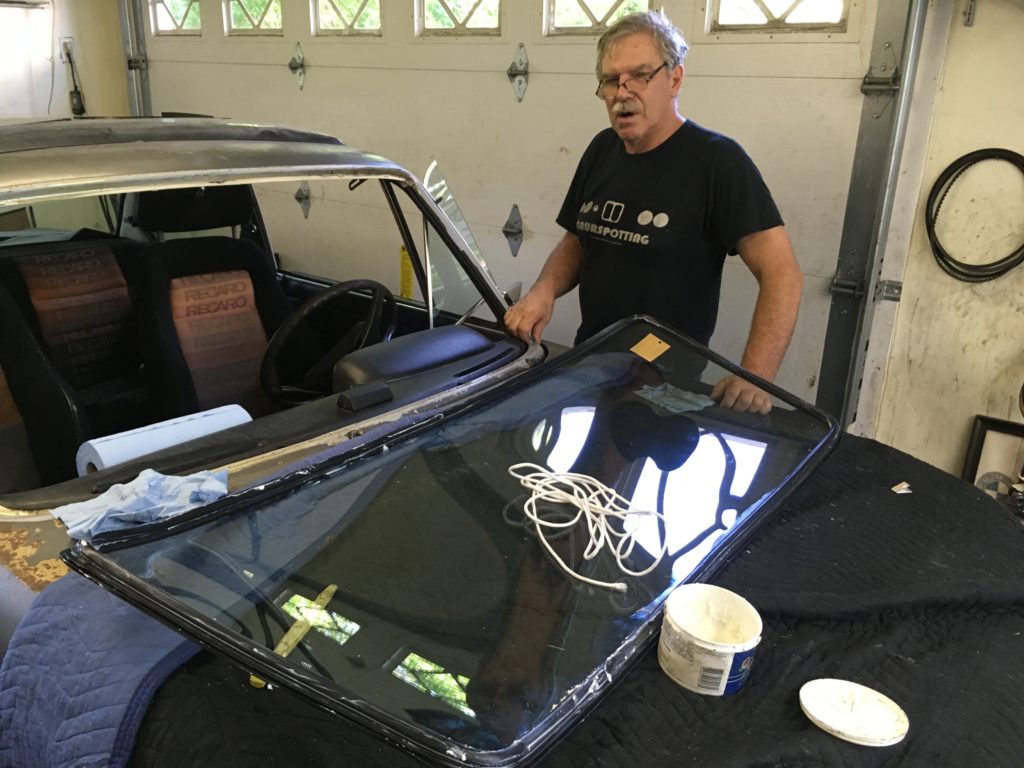
Lindsey Browne prepares to help me do the rope trick.
Lindsey and I had Bertha’s windshield completely roped in, but it wasn’t quite centered, making the side along the driver’s A-pillar a little high, which appeared to prevent the gasket from completely seating. Thus commenced the shoving and slapping part of the installation. As Lindsey was shoving the lower left corner of the windshield, I heard a faint tink, and saw the windshield crack.
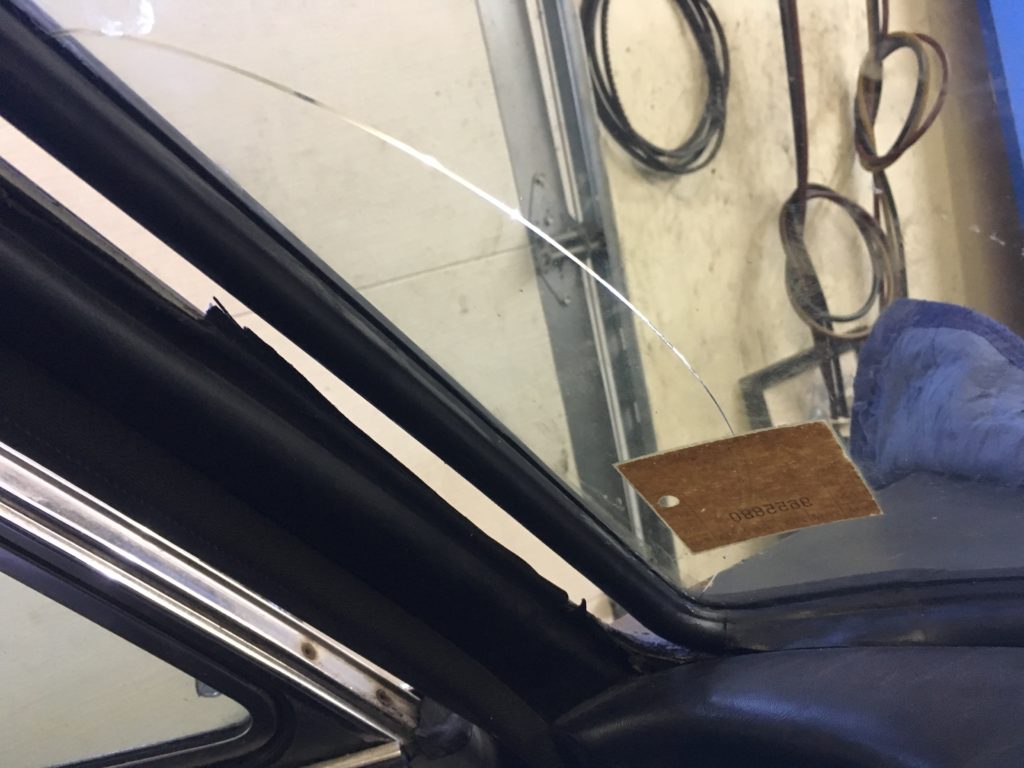
This was definitely not one of those Zen-in-the-garage moments.
Obviously, Lindsey felt terrible. Plus, we were both hot and tired. We stopped, said nothing for a bit, and just took it all in.
I was wondering whether it might be possible to simply finish the installation and then take the car to a glass shop to have someone repair the crack. Then Lindsey suddenly said, “I have a least one windshield at work. I’ll run and get it and be right back.” I tried to protest, but he insisted. I thought that it was an extremely kind gesture, intended to try and remedy the unfortunate situation, but candidly, I did not see this Sunday repair session ending with an installed un-cracked windshield.
While Lindsey was gone, I did some online searching. New 2002 windshields are available from the glass company Pilkington. I found one on eBay for $189 plus $129 shipping from Ohio. I was beginning to search to see whether there was a local Pilkington rep from whom I could order the windshield without the shipping charge.
Right then, Lindsey returned, carrying Windshield #2. He said that it was out of a 2002 he’d owned for a long time and had recently parted out. He laid it on the blanket I had on Bertha’s hood. I expected a pitted, scratched horror, so imagine my surprise when it was a very clean, recent-looking Pilkington windshield.
The second installation attempt went smoother. We were very careful to do the best job we could centering the windshield, as measured by sticking our fingers in the gaps at the top of the A-pillars, and this time we withdrew the rope more carefully, extracting it symmetrically from the center of the bottom and out both directions, and being certain to seat both lower corners of the windshield before running the rope up the A-pillars.
However, once the rope was out and all of the lips were flipped, the windshield was still a little high against the driver’s-side A-pillar, just as it was on the first attempt. Obviously we were afraid to push on it in the same way that caused the first one to crack. We were stymied.
I said to Lindsey, “Well, we have three choices. We could pull the windshield back out and try installing it again.” He threw me a look that could’ve melted the windshield.
“Or,” I said, “I could call a glass-installation profession on Monday and have him make a house call.” Lindsey nodded.
“OR,” I said, “We could install the lock strip and see if that helps the windshield to seat. If you recall, with Louie, we reached a similar point, but once the lock strip was installed, it seated much better.”
Lindsey raised an eyebrow. “Did you buy the lock-strip-installation tool?” he asked.
“Yup.”
“Is it the good one with the rollers?”
“Yup.”
“Have you ever used it?”
“Nope.”
“Neither have I. Wanna figure it out together?” We both smiled.
I mentioned to Lindsey that I’d read that it’s easiest to install the lock strip if the car has been sitting out in the sun to soften up the rubber gasket. He said something unprintable regarding any assertion that the heat already present in the garage had not already sufficiently softened the gasket.
Search as I might, I could not find a video of someone using the “good” kind of lock-strip tool with the rollers, but it was pretty obvious how it worked—and with a little lubrication of the groove in the gasket, the lock strip was installed in about fifteen minutes.
And with that, Bertha, remarkably, had an inspectable windshield.
I took Lindsey out for barbecue, and strong-armed him into accepting some money, explaining that pay-it-forward is great, but this was way above and beyond, and his producing a near-mint windshield on zero notice deserved remuneration. He graciously accepted, saying that what it really meant was that I’d won this round and next time he’d buy lunch.
Car friends are the best.
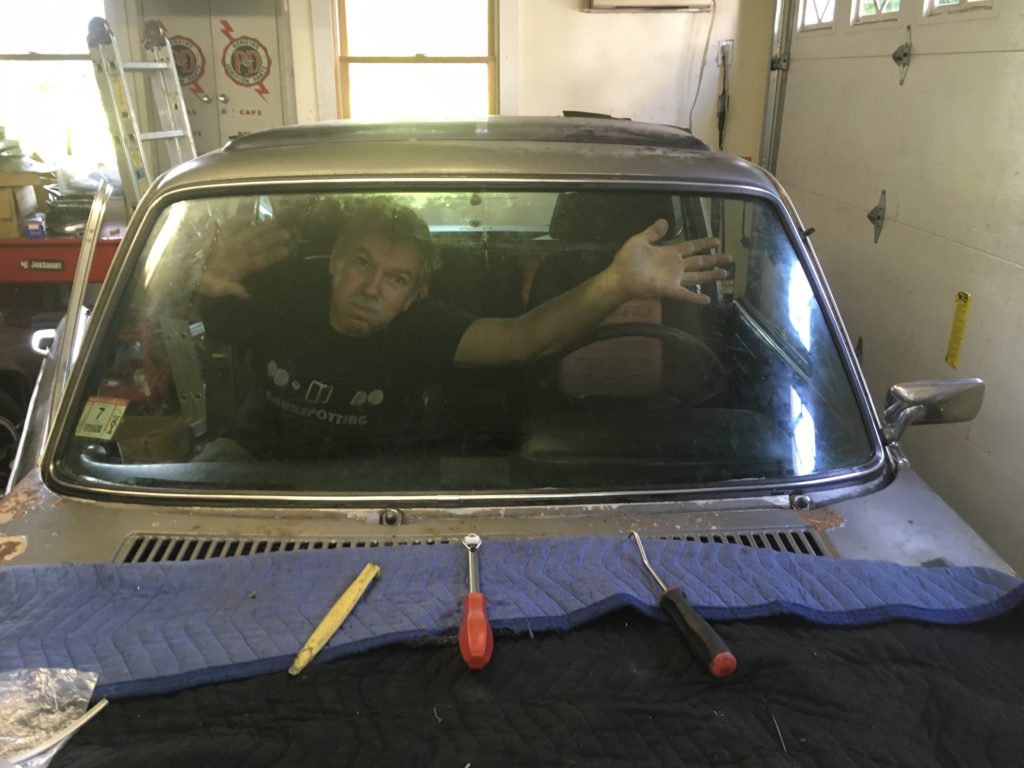
Lindsey hams it up behind the newly-installed windshield.
But it made me think about this, my second successful-though-miserable 2002 windshield installation. Why did I do it again when the first one was awful? Simple: the money. I can’t imagine that, had I taken the car into a restoration shop to deal with both the glass and the rust beneath it, I wouldn’t have come out at least a thousand dollars lighter—maybe $1,500.
Finally, with an un-cracked windshield, I could try to get Bertha inspected. Before taking the car in, I did a couple of things that I thought would make her appear more like a real car and less like an escapee from a Mad Max movie. I’d previously removed the a/c evaporator assembly to flush the core and replace the expansion valve; I wasn’t quite through rejuvenating it, so the interior looked ripped apart. I temporarily installed a non-a/c center console to complete the interior. And I installed the front grilles that had been off the car for 30 years.
The other issue was hole in the driver’s-side floor just behind the pedal bucket. It was shaped roughly like North Carolina, and nearly as large. If they checked the floor during inspection, I was done for (as I said last week, in Massachusetts, any rust hole in the outer body is grounds for failure due to concern about exhaust gases entering the cabin)—but I thought that perhaps more important than the hole itself was the tell-tale of the missing accelerator pedal.
On 2002s, E9s, and other vintage BMWs, the base of the accelerator pedal snaps onto two ball-headed posts that are welded to the floor. It’s not unusual for the floor to rot away where the posts are, and for there thus to be nothing for the accelerator pedal to attach to. I did what was a particularly ugly hack, even for me: I’d already ordered some ball posts that I thought would work (Mcmaster.com, part number 9512K63). I took an old licence plate, cut and bent it to approximately cover the rust hole, drilled two holes in it for the ball posts, snapped the pedal on, and sprayed some brown primer on the underside so it might not jump out if a mirror was swiped under the car. Again, the main goal wasn’t to cover the hole; it was to provide a mount for the accelerator pedal.
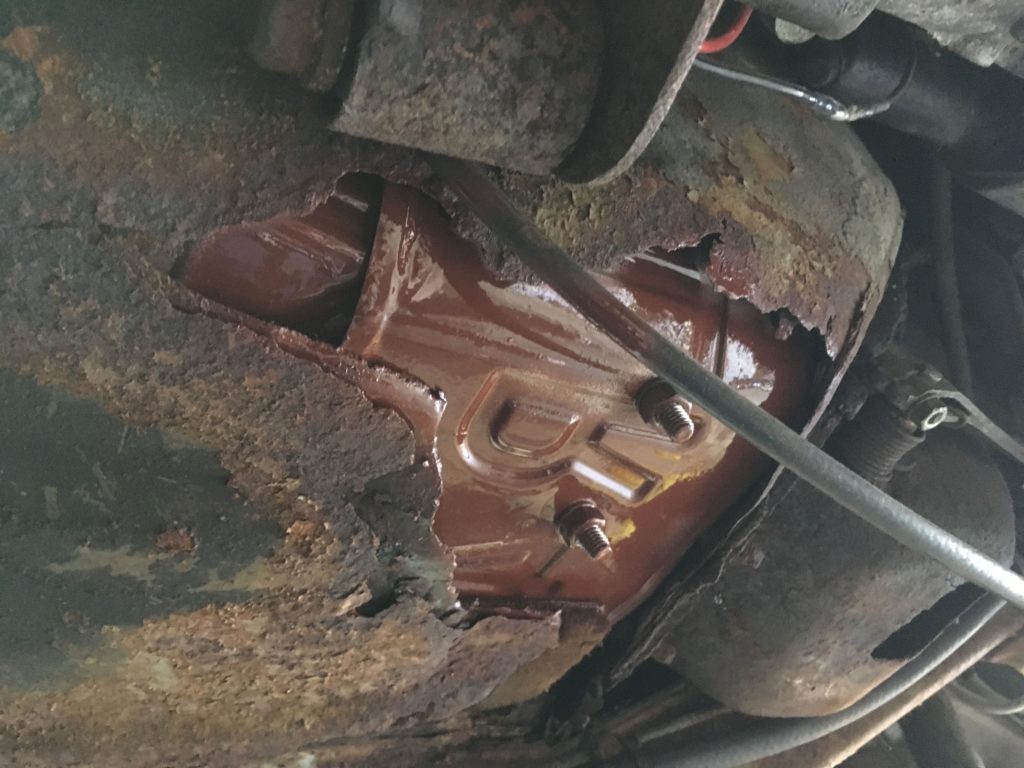
This was an ugly hack, even for me, but it did hold the accelerator pedal in place.
First thing Monday morning, I took the car down to the local station where I usually have cars inspected. They know me there, but with Massachusetts’ new inspection protocol, in which inspections are photographed and recorded, they can’t do anything for me that would get them in trouble.
I made eye contact with the inspector. He looked at Bertha and raised an eyebrow that unmistakably said, “That? You want to try to get that inspected?”
He walked around the car, made sure it had both license plates and no visible rust holes in the outer body, shrugged, and then waved me into the inspection bay.
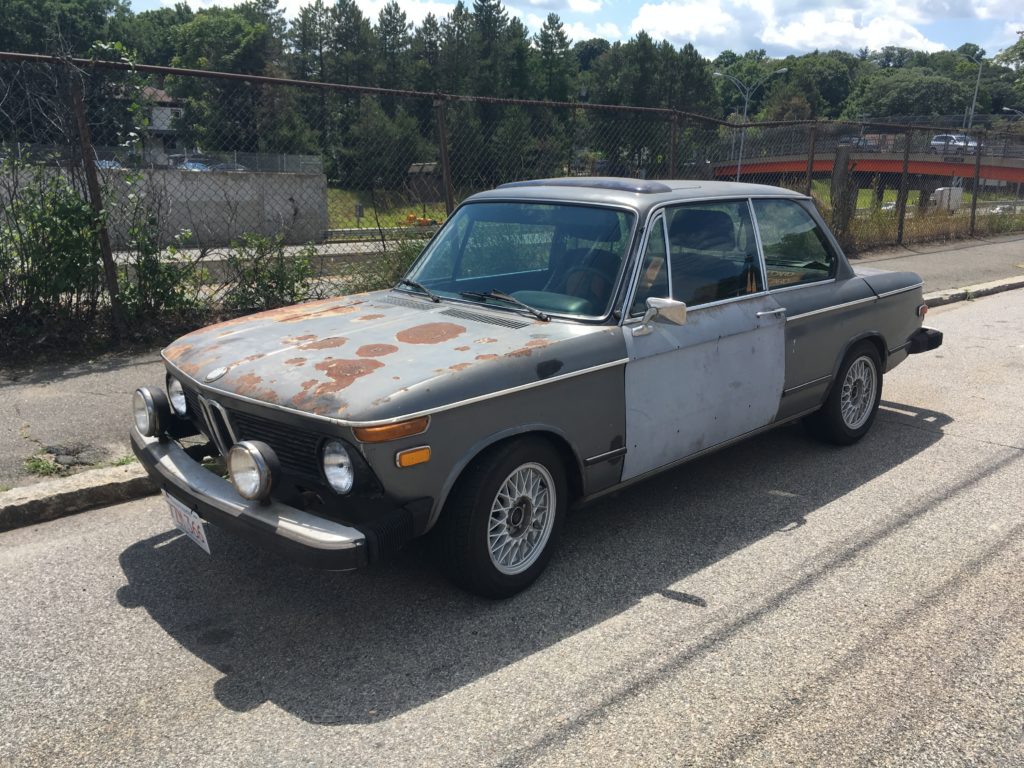
Even with the front grilles in, Bertha’s appearance is certain to give an inspector pause.
It was a nerve-wracking ten minutes. The inspector called me into the bay because the car doesn’t have a VIN tag on the inside of the driver’s door due to the door’s having being replaced (something that raised a lot of eyebrows when Maire Anne and I came back into the United States from Nova Scotia in our last big road trip in the car in 1987). I had to open up the hood and show him the VIN tag on the right side of the engine bay.
I worried that it might be all over if he saw the dual Webers—I imagined him searching for the missing thermal reactors—but he didn’t bat an eyelash at them.
I held my breath when I saw him jack up the front of the car. But he wasn’t looking for rust on the floor; he just wiggled the front wheels to check the tie rods and let the car back down.
And Bertha received her first new inspection sticker in 26 years.

VICTORY!
Later that day, when the rush-hour traffic had subsided, I took the car onto the highway and nailed it, as I’d done after first getting her registered a few weeks prior. It felt almost as good as it did the first time.
And with that, Bertha begins her sixth chapter. There were the Austin years, the endless modifications in Boston, Alex’s ownership, the 26-year slumber, resurrection and legality, and now, her bright future. Her coming-out party was last Sunday at BMW CCA Day at the Larz Anderson Auto Museum in Brookline. Not only did we take Bertha, we picked up Alex, my friend of nearly 35 years, and he drove her there—the first time he’d driven the car since he mothballed her in 1992.
He giggled like a kid.
Bertha attracted more attention than many of the concours entrants. Numerous attendees had been following the story here on BimmerLife, recognized the car, and were thrilled to meet both her and Alex. It was glorious.

Alex, Bertha, and I had a day we’ll always remember at BMW CCA Day at the Larz Anderson Auto Museum.
Really, what I need to do is plan a road trip with Bertha. The Vintage in 2019 feels much too far off. But in the meantime, Bertha and I can be seen (and heard) tearing up the asphalt many evenings near the intersection of I-90 and I-95 in Newton. The car is hard to miss.
Me, I’m the guy with the Cheshire Cat grin, nailing and wailing on the car that shouldn’t even still be here.
As I say in the last chapter of my first book, “At the risk of being crass, obviously you can’t crack open grandma’s chest and stuff a new heart in there. But that’s exactly what you can do with a car. You can cheat death. You can spit in its eye. Listen to that baby run. Oh, yeah. Suck on that, death.” Many days, it is a metric ton of work and ridiculously expensive doing what I do, even on a shoestring budget. There is no balance sheet on earth on which buying back and resurrecting Bertha made any sense whatsoever.
But sitting in that faded Recaro, looking out at the ridiculously patinaed hood, and hearing the car scream the way she did 30 years ago, it’s almost worth it.—Rob Siegel
____________________
Rob’s new book, Just Needs a Recharge: The Hack MechanicTM Guide to Vintage Air Conditioning, is available here on Amazon. His previous book Ran When Parked is available here. Or you can order personally inscribed copies of all of his books through Rob’s website: www.robsiegel.com.



